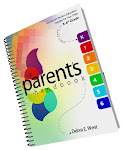Halloween!
1. Make sure your children's costumes don't drag on the ground.
2. Make sure they can see and breathe properly through any mask.
3. Make sure the bag or container they will collect their candy in is strong and sturdy.
4. Make sure they are dress warm or cool enough depending on the weather.
5. Their shoes should be comfortable.
6. If your children are small, put them in a wagon and pull them around. Small children get tired of walking.
7. Another important tip is to make sure their costumes are fire proof. There are accidence with lit jack-o-lanterns and other dangers.
8. Make sure everyone can be seen in the dark. Bring a flash light if you need it.
9. Make sure a responsible adult is with your children as they go from house to house.
10. Ask a group of friends to go trick or treating with you. It is a lot of fun for the kids.
11. Check the candy and treats before letting your children eat anything. Make sure it is factory wrapped and if not, just throw it away.
12. If you have young children, take the candy and give it out in small amounts. There are a lot of tummy aches after Halloween.
Have fun!






































